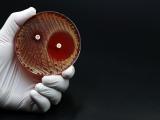About 81% of patients identified in the early stages of a year-long multistate outbreak of fungal infections linked to contaminated steroid injections had central nervous system (CNS) infections, but non-CNS infections were more frequent later in the outbreak, according to a study today in the New England Journal of Medicine.
In the Centers for Disease Control and Prevention (CDC)-funded study, US researchers examined 328 patients who didn't have peripheral joint infections, of the more than 700 outbreak cases. The patients studied were those who received methylprednisolone acetate injections after May 19, 2012, and whose cases were reported by Nov 19, 2012, from the six hardest-hit states: Florida, Indiana, Michigan, New Jersey, Tennessee, and Virginia.
The authors wrote that little is known about infections from Exserohilum rostratum, the predominant outbreak-associated fungus.
Of the 328 patients, 265 (81%) had CNS infections and 63 (19%) had non-CNS infections only. The team said that lab-confirmed E rostratum was found in 96 of 268 patients (36%) for whom samples were available. They also said that strokes were associated with more severe abnormalities in cerebrospinal fluid (P < 0.001).
Of the 250 patients in the study who had meningitis, 229 (92%) received the diagnosis at the time of initial hospital admission, and 21 (8%) received the diagnosis later. Thirty-five patients had evidence of stroke. Lumbar puncture was performed in 29 of them, and all had pleocytosis in cerebrospinal fluid that was consistent with meningitis.
The authors conclude, "Fungal infections caused by epidural and paraspinal injection of a contaminated glucocorticoid product can result in a broad spectrum of clinical disease, reflecting possible variations in the pathogenic mechanism and in host and exposure risk factors."
Largest healthcare-related outbreak
In a press release yesterday that noted the 1-year anniversary of the fungal infection outbreak, the CDC said it is the largest-ever US outbreak of healthcare-associated infections. The agency said many outbreak patients continue to struggle with complications, including side effects of antifungal drugs.
The agency said it has awarded a contract to the University of Alabama at Birmingham to assess up to 500 outbreak patients. The study will run through at least August 2015 and explore longer-term health impacts, treatment efficacy, and potential relapses.
"These outbreaks show the urgent need to address shortfalls in the oversight and safety of compounded drugs to reduce the inherent risks associated with these products, which have not undergone review and approval by the Food and Drug Administration," the CDC said in the news release.
"CDC supports efforts by FDA and state Boards of Pharmacy to provide appropriate and effective oversight of compounding pharmacies."
Two more cases, 1 additional death
The CDC reported in an update yesterday that the outbreak has now reached 751 cases and 64 deaths, an increase of 2 cases and 1 death since its previous update on Aug 5. Twenty states have been affected, a number that has not changed (see CDC map below).
The CDC said 233 cases were meningitis only, 151 involved meningitis with spinal or paraspinal infections, 7 involved stroke without lumbar puncture, 325 were paraspinal or spinal infections only, 33 were peripheral joint infections only, and 2 were paraspinal or spinal infections with peripheral joint infections.
The outbreak is linked to three recalled lots of methylprednisolone acetate made by New England Compounding Center in Framingham, Mass.
See also:
Oct 24 N Engl J Med study
Oct 23 CDC news release
Oct 23 CDC outbreak update






















